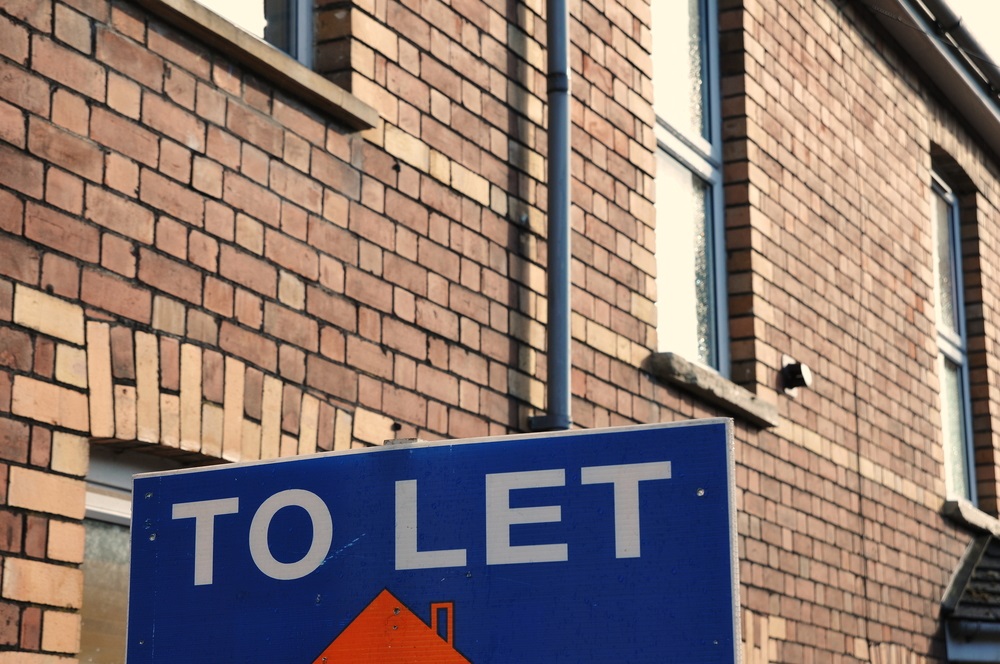The buy-to-let market is booming. Lenders are keen for new customers who aren’t subject to as much regulation as regular house buyers, while more people are seeing it as a safe form of investment as they approach retirement. So, is buy-to-let right for you? Elizabeth Henry looks at the pros and cons.
 The current buy-to-let market is seeing decent returns for landlords.
The current buy-to-let market is seeing decent returns for landlords.
According to figures from LSL Property Services, landlords are seeing average returns of 11.8 per cent a year, the highest level since June 2010.
And as housing gets more expensive and lenders get more picky about borrowers, would-be first-time buyers are finding it harder to get on the property ladder and are forced to rent for longer.
The Intermediary Mortgage Lender’s Association (IMLA) forecasts that by 2032, if recent trends in the market continue more than half of the UK’s housing will be rental.
Is buy-to-let the best investment for you?
There is plenty to consider when deciding if this is the best way to invest your money. Despite the promises of high rental returns, buy-to-let is not for everybody.
While prices tend to rise over the long term, if you’re looking at retiring in the next five years you may find it’s too risky, says David Lawrenson of LettingFocus.com, who has written a best-selling book about buy-to-let.
He recommends being in the market for 10 years before you retire, and cautions investors who think they can make a quick buck that the property market has changed significantly.
Lawrenson says there are compelling reasons to choose housing – the big advantage being, you’re in control of your investment. However, this may be a disadvantage for some because of the time involved.
There are no guarantees that your house will be worth more in 10 years than it was when you bought it. In Scotland and Northern Ireland, where the recession hit the housing market particularly hard, around 140,000 households were still in negative equity – meaning their house was worth less than their mortgage – at the end of last year.
Even if you make a modest return, high mortgage fees and stamp duty can eat away at your profits, Lawrenson warns.
“There was an opportunity when property prices were rising, rent was rising and you could get cheap finance – the market hit a sweet spot. It’s harder now to make money but it can be done – the key is to do it right. You need the right tenants, in the right area, and there’s not necessarily as great wealth to be achieved as quickly.”
If all your savings are tied up in your home and you’re worried that you will approach retirement with no extra income, buy-to-let could be your best option as a pension plan.
Another common reason for moving into buy-to-let is that you may need to move but be unable to sell your house, and plan to rent it out instead. In this case you may need to get consent-to-let.
Getting the right house
With huge disparities in price and trends around the country, where you buy could make a big difference to your profits, both in rental returns and any gains made on selling the house.
Find areas which are likely to see regeneration, advises Lawrenson. Look for improving transport links, increasing employment and new business popping up.
For example, North-East England is seeing record levels of hiring and new transport links will also make the area more attractive, while prices aren’t yet out of control.

Property type is also key, says Jeni Browne, head of lending at buy-to-let specialist broker Mortgages for Business.
“Different types of properties in different areas yield different levels of rent. For example, a four-bedroom house in a student area would probably give strong returns, whereas a flat in Belgravia might give a low return,” Browne says.
“When you’re looking at properties, have a conversation with the estate agent, who should have a strong grip on the market.”
Lawrenson tends to buy freehold houses rather than flats, as leasehold requires you to deal with neighbours when doing renovations, for example.
“Often though leasehold flats are the only thing people can buy because they can’t afford a freehold house. But it’s much easier to manage if you own the whole thing.”
The right tenant is key
Lawrenson believes the most important consideration as a landlord is finding good tenants. You can do this yourself or go through an agent.
A property management firm can also take care of the property on an ongoing basis. But the internet abounds with tales of agents who haven’t done their jobs properly, so if this is important to you it may be worth doing yourself.
“Ask the big questions: are the tenants good people, are they who they say they are and can they afford it?” Lawrenson says.
Building a relationship with your tenants can also nip problems in the bud and lead to longer tenancies.
The recession was a difficult time for tenants, particularly in the North, and many struggled to pay rent. But LSL’s tenant arrears tracker shows the number of tenants severely behind on rental payments has fallen by 35,000 (35 per cent) in the 12 months to June. More tenants paying their rent spells good news for landlords.
Can you get a loan?
It’s usually much easier to get a loan for a buy-to-let property than for other forms of investment, Lawrenson says.
“You can’t go to the bank and say ‘I’d like £150,000 to buy shares,’ but they will actually lend money for property. Even if you wanted a loan for a small business or some fantastic entrepreneurial start-up, it’s very hard to get money from the bank.”

If you fit the lenders’ profile, getting a mortgage may be easier than you think. A recent report from the Intermediary Mortgage Lenders Association (IMLA) – representing lenders who work with brokers – said that lenders were increasingly favouring buy-to-let buyers over first-time buyers.
Buy-to-let borrowers usually take out interest-only mortgages, meaning their repayments are much lower. Plus, new regulations such as the Mortgage Market Review (MMR) are affecting residential mortgage lending, especially first-time buyers.
By comparison buy-to-let looks more appealing to lenders because it’s relatively hassle-free.
However, lenders will still look at your income and employment. They will also want to know what sort of house you plan to buy and where, as well as the type of tenants you are considering.
Most lenders will want a deposit of around 25 per cent. Remortgaging can be a good way to free up the cash for a deposit on a second house.
But even with a good deposit, many lenders won’t give you a buy-to-let mortgage term that extends beyond your 65th or 70th birthday – although a broker can find the exceptions.
Jeni Browne says there are some lenders who will lend until you’re 80 or 85, and at least one has no maximum term as long as you’re younger than 70 when you apply, meaning you could still be paying off the loan aged 100. There will almost always be an option that fits your circumstances.
Getting into the market
 Browne says the first step is to go and see a broker to find out how buy-to-let mortgages work and get a good overview of the market.
Browne says the first step is to go and see a broker to find out how buy-to-let mortgages work and get a good overview of the market.
Many won’t charge fees and can tell you exactly what’s on offer. They can also check your ability to get “funding in principle” – do this at the beginning to pre-empt any problems.
While banks are keen to lend to ideal customers, you could be turned down if you have a poor credit score, for example.
Or they might want to see £25,000 per year earnings, but you only earn say £20,000 per year. If you are self-employed it can be hard to prove you can bring in a steady income.
In all these cases it’s best to talk to a broker about your options.
Next, find a property. As a rule of thumb, the property should generate rent at 125 per cent of the mortgage interest payments before a bank will lend on it, Browne says.
So if your mortgage interest payments are £100 per week, rent should be £125 per week. While not all lenders use this ratio, most have online calculators so you can check if your rental returns would fit their criteria.
The extra money will cover your mortgage payments if a tenant leaves and the house sits empty. Extra rent will also let you build up a slush fund so you can cover costs such as repairs.
For a general overview of private rental returns, look at the Index of Private Housing Rental Prices on the Office of National Statistics website. Estate agents should also have this information available.
While the Mortgage Market Review (MMR) doesn’t apply to buy-to-let, lenders are being extra careful when checking if you can afford your loan, so don’t expect to sail through the process, Browne says.
You must legally tell the lender if your loan is for a buy-to-let property. If you later plan to move into the property you will have to change to a residential mortgage or you may be breaking the law.
Mortgage products
Buy-to-let mortgages have the same range of products on offer as residential mortgages – mainly fixed and tracker rates, both of which have their advantages.
The difference, Browne says, is that while most residential mortgages are capital and interest, 99 per cent of Mortgages for Business clients get an interest-only mortgage for their buy-to-let property.
“There are several reasons for this, but the main two are tax and cashflow. Most properties which are highly leveraged would not make enough rent to cover a repayment mortgage,” she says.
“Lenders are fine with interest-only on buy-to-let.”
Mortgages for Business is “very pro-five-year fixed rates” at the moment, Browne says. Rates are guaranteed to go up, so a five-year fixed rate could well work out better for you over the long term.
“There is nothing worse than watching your interest rate going up, whereas in a five-year fixed term you’ll probably ride out the uplift and downturn in rates if there is one.”

But while banks clamour to offer the “best deal” Browne advises to look beyond the hype. There is usually little difference between products once costs like arrangement fees are considered.
“When you take out a buy-to-let mortgage, it’s all very much off the shelf. It either tends to be high fees and low interest rates or high interest rates and low fees.
“It’s all smoke and mirrors – the mortgage is going to bring in the same amount of money to the bank in the end.”






